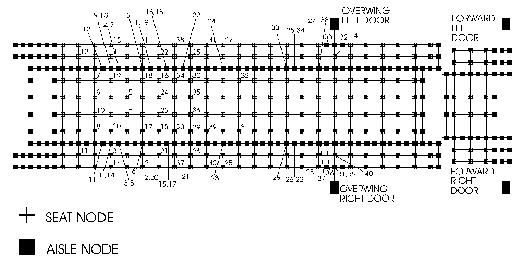THE SIMULATION OF AIRCRAFT EVACUATION UNDER HAZARDOUS AND NON-HAZARDOUS CONDITIONS
The ability to empty heavily populated enclosures quickly is important to the efficient day to day operation of large commercial buildings such as cinemas or rail and air mass transport vehicles. More importantly, it is an essential design feature in the event of emergency situations.
The layout of the enclosure - aircraft or building - and the nature of the likely occupant population mix are essential ingredients in the search for optimal configurations. Considerations such as, number and location of exits, travel distances, function of enclosure, presence of internal obstructions and compartments, number of elderly and disabled occupants, nature of occupants disability, occupants knowledge of enclosure layout etc all must be taken into account. Mathematical evacuation models such as EXODUS attempt to incorporate these factors into their predictions.
airEXODUS is an egress model - developed by the FSEG and written in C++ - which is designed to simulate the evacuation of large numbers of individuals from an enclosure. The model tracks the trajectory of each individual as they make their way out of the enclosure, or are overcome by fire hazards such as heat and toxic gases. The software is expert system-based, the progressive motion and behaviour of each individual being determined by a set of heuristics or rules.

FIGURE: Wide body aircraft layout showing passenger starting points (indicated by number beside seat) and point of collapse (numbered pointer). The number indicates the order of collapse. Fire hazards generated by fire in the rear of aircraft.

FIGURE: In comparisons with data generated from a series of B737 evacuations conducted at CRANFIELD, the EXODUS predicted evacuation times fell within the variation observed within the experiment. The experiments involved competitive evacuations through the front main cabin doors.
For more information about EXODUS visit the EXODUS
Web Pages. For a complete listing of EXODUS publications
visit the FSEG Publications pages. The following
are a few examples of the many publications on airEXODUS:
# 83, 78, 76, 74, 68 - 65, 61, 60. 90, 86, 81, 80

